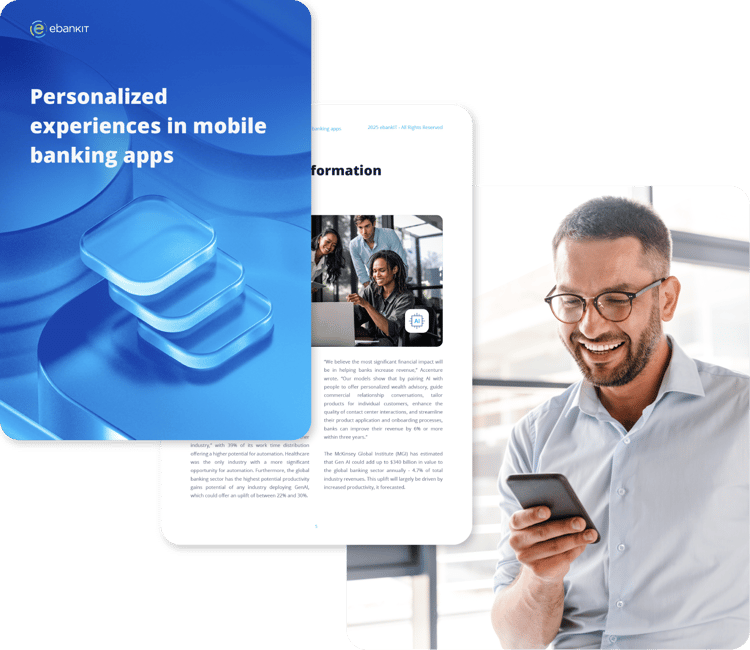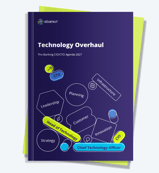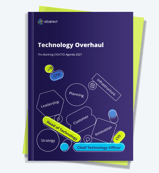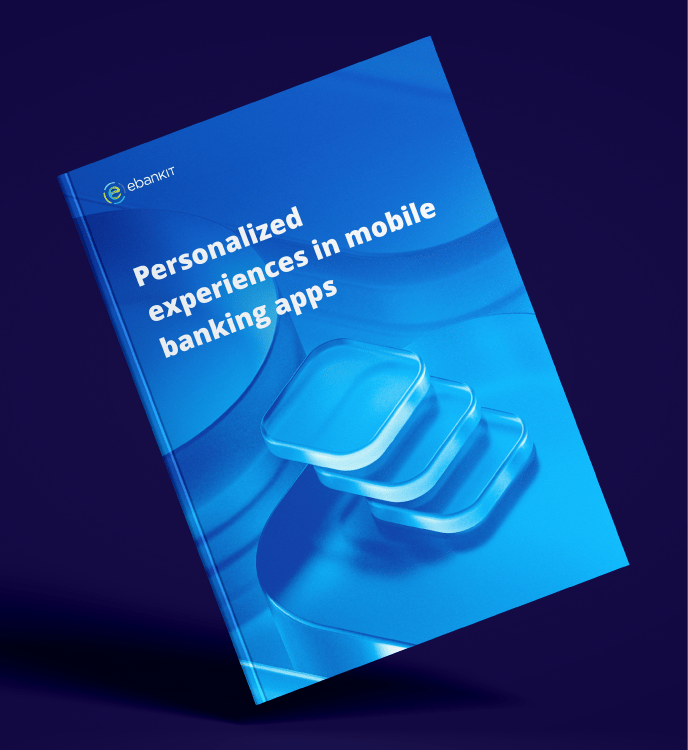Executive summary
- Personalization is the competitive battleground on which financial institutions will face up against Big Tech and agile fintechs.
- 71% of consumers expect businesses to “recognize them as individuals and know their interests.”
- In its latest report, ebankIT examines how banks worldwide are leveraging personalization to transform mobile experiences and foster lasting loyalty.
- Explore real-world case studies from global leaders that are setting new benchmarks in personalization worldwide.
- The report highlights actionable strategies for financial institutions to leverage technology and agile methodologies for implementation.
How to make mobile banking more personal
Today, banks and credit unions have a golden opportunity to deliver the personalization customers are looking for.
However, personalization is the competitive battleground on which financial institutions will face up against Big Tech, agile fintechs, and other relatively new financial institutions, such as neobanks.
This means that it’s critically important to understand how to personalize services and meet the needs of every generation of customers.
Nowadays, young consumers are used to a mobile-first experience and are demanding personalized services.
According to McKinsey, 71% of consumers expect businesses to “recognize them as individuals and know their interests,” associating personalization with “positive experiences of being made to feel special.”
If that is the case, then how can financial institutions still make customers feel seen, understood, and valued?
ebankIT has conducted comprehensive research to identify the critical insights financial institutions need to address these challenges.
In its latest report, ebankIT explores how banks worldwide are leveraging personalization to transform mobile experiences, strengthen customer connections, drive better financial results, and foster lasting loyalty.
Must-have features for mobile banking
These are just a few of the powerful features uncovered in ebankIT’s research that can drive value for financial institutions. Download the complete report to discover the full range of capabilities.
1. Customizable dashboards and interfaces
Leverage modular UI frameworks to give users the flexibility to rearrange elements, add quick-access tiles, or set preferred themes. This not only boosts engagement but also reduces “app fatigue” by surfacing features each user finds most valuable.
2. AI-powered chatbots for personalized assistance
Provide 24/7 automated support from basic account inquiries to more complex financial planning advice using large language models or custom NLP pipelines. By continuously learning from user interactions, these chatbots become more adept at delivering relevant suggestions, further driving user satisfaction.
3. Personalized financial insights and recommendations
Advanced machine learning models such as gradient boosting or deep neural networks analyze transaction data and behavioral patterns to deliver near real-time insights. These systems might highlight suspicious expenses, predict upcoming bills, or recommend optimal savings plans, creating a proactive, data-driven experience.
4. Context-aware geolocation services
Integrating mapping APIs with personalized app logic enables location-specific offers, such as notifying customers about fee-free ATMs nearby or providing currency exchange alerts when traveling abroad. This creates a frictionless, tailored user experience on the go.
Fintech moves fast, don’t fall behind!
Read on real-world case studies from global leaders
Discover how industry leaders, such as Revolut and HSBC, are raising the bar with creative strategies, robust technology platforms, and a relentless focus on customer needs, setting new benchmarks in personalization worldwide.
HSBC Mobile Banking
HSBC’s approach to personalization helps maintain strong customer engagement across different regions by offering targeted financial tips or product suggestions based on user behavior.
Weyay Bank - Gen Z’s mobile-first banking experience
Weyay Bank, Kuwait’s first digital-only bank, is built entirely around personalization for Gen Z. From gamified savings goals to contextual offers based on lifestyle data, Weyay is setting a new standard for mobile banking.
Curious about how Chime, Revolut, and IKO are transforming their mobile experiences, too?
Download the full report to explore all five case studies in detail.
3. Actionable strategies for implementation
The report underlines how financial institutions can strategically harness technology and agile methodologies to deliver personalized, impactful experiences that enhance satisfaction and customer loyalty.
By building robust data pipelines and deploying advanced machine learning, banks can efficiently capture, cleanse, and interpret vast amounts of customer data.
Prioritizing contextual and prescriptive personalization, analyzing variables such as user location, transaction timing, and device also enables banks to deliver experiences far beyond basic segmentation.
Finally, leveraging a sprint-based development model empowers teams to rapidly prototype personalization features, quickly gather feedback, and optimize solutions for maximum impact.
These are just some of the actionable insights explored in this report.
Curious to know more?
Download the full guide and explore actionable strategies, real-world use cases, and expert guidance to elevate your financial institution’s user experience.






%20without%20SAM%20-%20Maturity%20Level%20-%202-KO%20edit.webp?width=160&height=57&name=67768-ebankIT%20Platform%20-%20CMMI%20Development%20V2.0%20(CMMI-DEV)%20without%20SAM%20-%20Maturity%20Level%20-%202-KO%20edit.webp)
